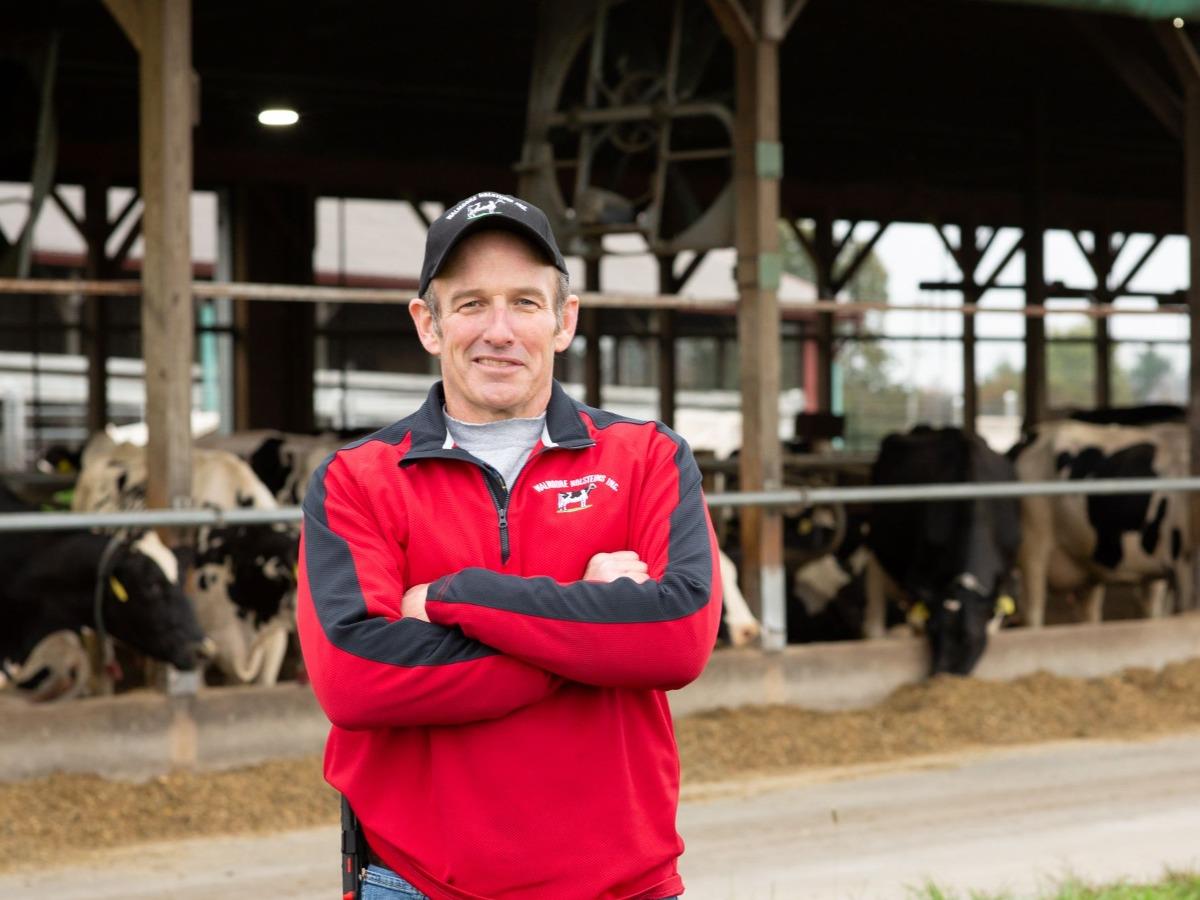
As the U.S. dairy industry works towards ambitious environmental stewardship goals, farmers like Walt Moore are looking at ways to scale back and reuse water.
Thanks to continuous innovation and modernization, the environmental impact of producing a gallon of milk shrunk significantly between 2007 and 2017, requiring 30% less water and 21% less land and generating a 19% smaller carbon footprint. Despite the progress made, farmers like Walt Moore know that more action is needed to meet the U.S. dairy industry’s ambitious 2050 climate goals. Since milk is 87% water, conserving this precious resource is vital.
Walt has owned and operated Walmoore Holsteins for 30 years. The business was established in 1909, and Walt has grown the operation from 20 cows and 128 acres (circa 52 hectares) to 1,050 cows and 1,800+ acres (728 hectares). He is always looking for ways to improve his dairy operation, which includes better conservation.
Water Around the Farm
Walt’s farm, like many U.S. dairy farms, recycles water multiple times, starting with water for the plate coolers, which chill the milk produced from 101 degrees when it emerges from the cow to about 38 degrees, the temperature needed to keep it fresh.
On Walmoore Holsteins, the plate cooler water becomes the cows’ drinking water. Any unconsumed water is then recycled and reused several times over for the cow-cooling sprinkler systems or for washing down the milking center.
Checking for faulty valves, which can cause water leaks, is also an important strategy for dairy farmers. Consistent monitoring helps keep water use steady and identifies any issues.
“You still find faulty valves — I just saw one two weeks ago,” Walt said.
Upgrading equipment can also provide opportunities to save. When Walt built his new milking center in 2009, he went from washing it down three times a day to just twice. The new washing system used different soaps and was easier to clean, which contributed to him saving approximately 225 gallons of water (or 852 liters).
Simply by changing the protocol around his cows’ water bowls, Walt has reduced water consumption by 2,500 gallons daily (just over 9460 liters). He now dumps the water once rather than three times a day, scrubs the bowls weekly, and cleans the surrounding area at each milking.
Technology and Innovation
Technology innovations also have the potential to deliver yet more water savings around the farm. Take smart soakers, for example, which sense when a cow is in a stall to be cooled and time sprinkler systems down to the second, saving up to 70% of the water a conventional cow soaking system uses.
In the future, artificial intelligence could even sense each cow’s body temperature and cool her down with a water temperature and duration tailored precisely for her.
Crops and Water
Another focus for dairy farmers is finding new ways to grow the crops that help feed their cows. For instance, Walt’s father switched from strip farming in straight lines to contour farming, which better accommodated the farm’s rolling landscape and improved soil and water conservation. Planting vegetative buffers along streams has also helped retain water on the farm while protecting community water quality.
Walt’s father experimented with cover crops, a practice Walt has continued and expanded with crops such as crimson clover.
Cover crops can be irrigated in part with cows’ manure and urine, which conserves water and fertilizes them; in turn, the plants allow the nutrients to be better absorbed into the soil. Walt is now trying subsurface drip irrigation, or piping wastewater directly into the soil. He hopes this method could be more efficient and reduce evaporation into the air, but he still needs to test the resulting soil and water quality.
Walt has partnered with the Stroud Water Research Center near him to try new water-reduction strategies and monitor the results. He is also planning to trial a natural biochar filter in partnership with Brandywine Conservancy, which takes advantage of charcoal’s ability to remove impurities from water.
Together, these steps help minimize runoff and conserve community water. “I was just reading about how there are areas in the United States where the water tables are at the lowest levels since they’ve been recording them,” Walt said. “That stuff starts to worry me. We rely heavily on groundwater. The more I can conserve, the more it’s a win-win. If I’m pulling less out of the aquifer, there’s more for the neighbor. We’re part of the community, and we have to be good stewards.”


